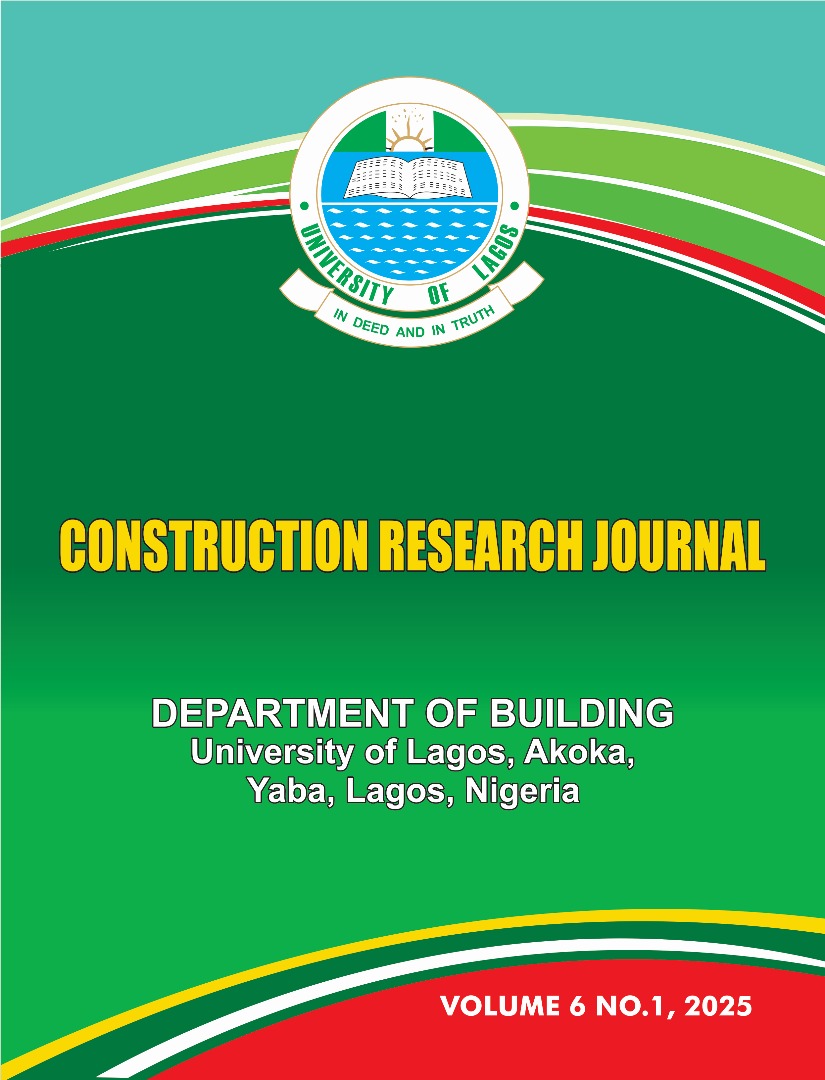FACTORS AFFECTING MAINTAINABILITY OF MASS HOUSING UNITS IN LAGOS STATE
Abstract
Purpose: Mass housing units are susceptible to defects and varied degrees of deterioration; hence, this study examined factors affecting the maintainability of mass housing units in Lagos State.
Methodology: The study employed a quantitative research approach. Primary data were collected through a cross-sectional survey of facility managers and owners/users of mass housing units in the study area. A structured questionnaire was administered to respondents, and the data collected were analyzed using descriptive and inferential statistical tools.
Findings: The results indicated that the predominant factors affecting the maintainability of mass housing units include accessibility to building systems and utilities, availability of maintenance records and resources, and availability of spare parts. The study also revealed that there was no significant difference in the way facilities managers and users perceive the factors affecting maintainability of mass housing units, except in considering the complexities of building designs as one of such factors.
Practical Implications: The study established the factors affecting maintainability of mass housing units that could serve as value-adding information to stakeholders within the mass housing delivery value chain. The findings also provide operational considerations such as the digitalization of project documents and maintenance records for the production of more resilient and sustainable mass housing projects.
Originality/Value: The study particularly focused on the maintainability of various categories of mass-produced housing estates, which is a paradigm shift from most previous studies that lumped up buildings irrespective of their ownership characteristics.


